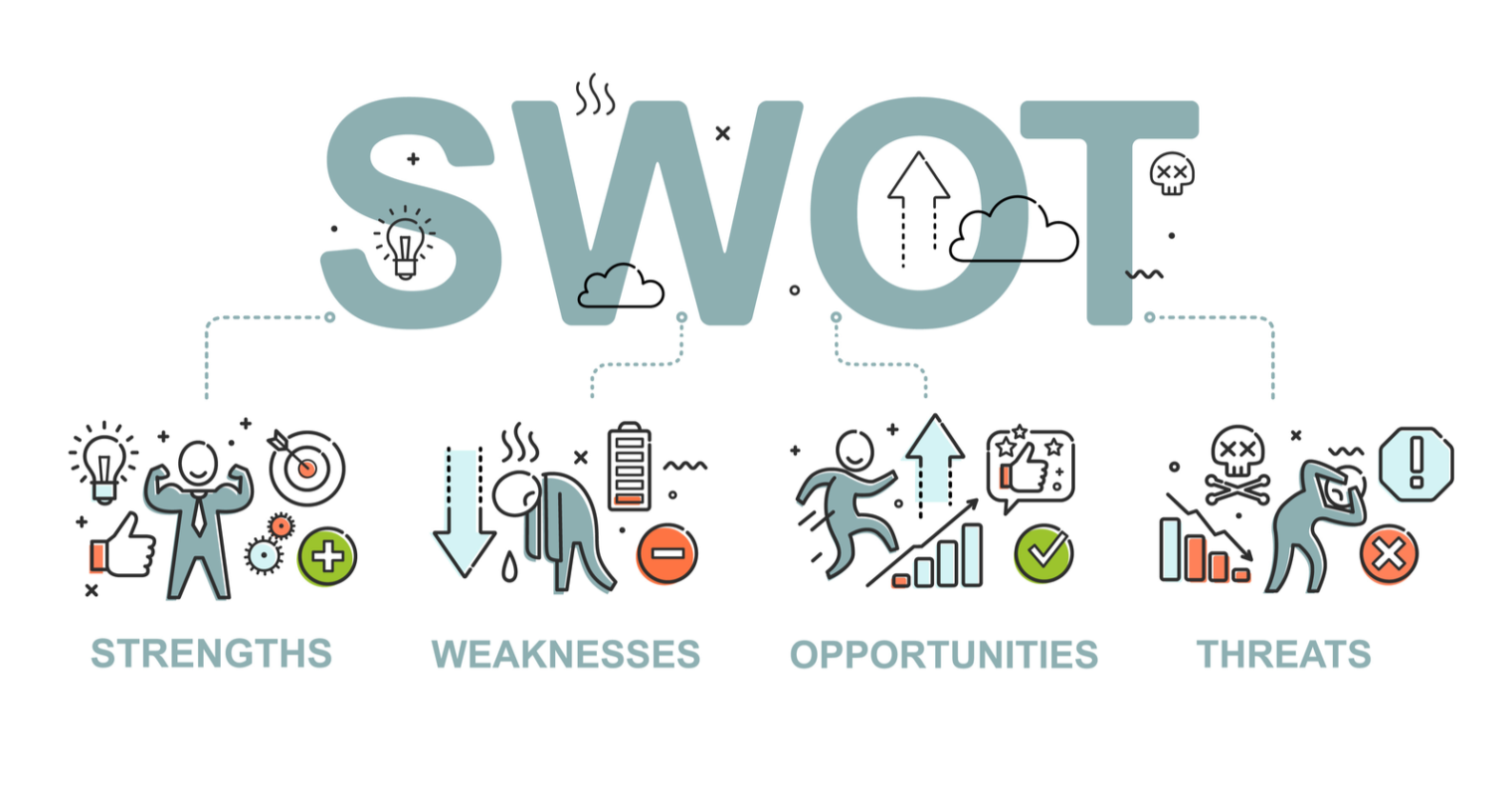How to conduct a SWOT analysis: key points
Geopolitical conflicts and the global economic slowdown are putting pressure on all business areas. Operating in an unstable environment involves enormous risks, which are essential to assess soberly. SWOT analysis can be an optimal solution. It allows you to track market trends and compare goals with real opportunities.
A SWOT analysis, also known as a SWOT matrix, is a tool used to identify a company’s strengths and weaknesses. It can help companies improve the effectiveness of strategic planning and assess the level of competitiveness. The name of this tool is an abbreviation of SWOT:
1. Strengths are the organisation’s abilities that can be used as an advantage in the market.
2. Weaknesses are problems or shortcomings. They can prevent an organisation from operating effectively and reduce its ability to achieve its objectives.
3. Opportunities are the ways in which an organisation can develop and improve its effectiveness.
4. Threats are external and internal factors that can be detrimental to the organisation.
The analysis helps to identify each of these aspects and to develop further activities based on the picture obtained.

Benefits of using a SWOT analysis
The SWOT matrix is an indispensable tool for a company in any field of activity. It allows us to get a comprehensive picture of the current situation and to understand the directions of further development.
Advantages of the analysis:
1. Resource optimisation. The tool assesses the availability of company resources and shows how to use them more efficiently. This enables the business to allocate resources more effectively to achieve its goals.
2. Improved business efficiency. Identifying the company’s weaknesses helps to resolve problems in a timely manner and improve overall productivity.
3. Risk analysis. Understanding likely challenges and risks allows you to better prepare for them. It also helps improve the flexibility of business processes, making the company more resilient to market challenges.
4. Competitor research. Understanding the strategies of different market players helps you develop your own approach. By analysing your competitors’ mistakes and successes, you can identify what you can use and what you should avoid.
Conducting a SWOT analysis requires the involvement of executives and managers from all parts of the company. They, more than anyone else, know the strengths and weaknesses of their organisation. It is also important that the company’s objectives are clearly defined and aligned before the matrix is built.
Building the matrix
The first step is to create a square divided into four equal parts. The upper left part will describe strengths, the right part will include weaknesses, the bottom left should contain a list of opportunities, and in the bottom right-hand corner, there should be threats and risks to the business.
When filling in the matrix, it is crucial to take into account all the characteristics of the company, even the smallest nuances of its activities. Each of them can influence the company in one direction or another, becoming an advantage or a threat. After filling in the matrix, it is necessary to analyse the collected information and make predictions about the company’s future. It is necessary to assess how the identified strengths, weaknesses, opportunities, and threats can affect the company’s further development and functioning.
